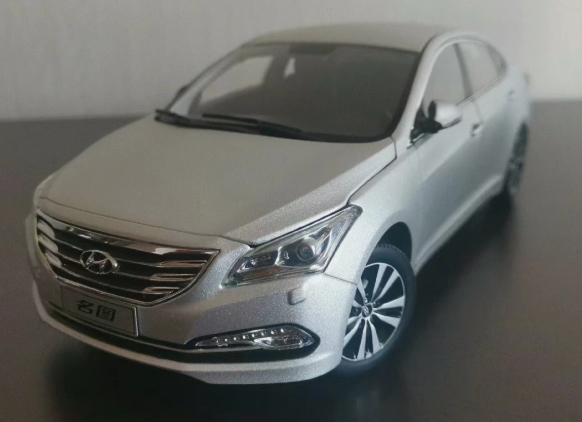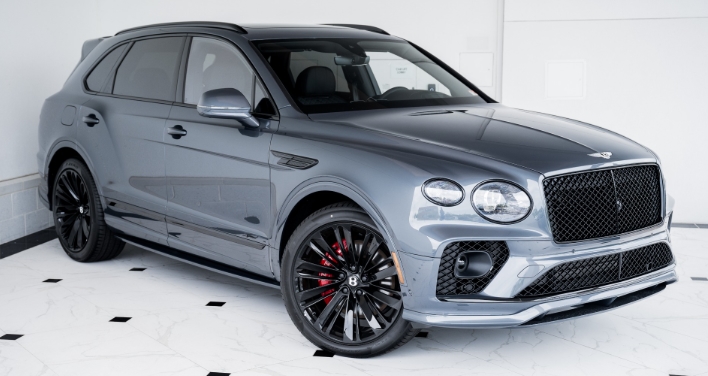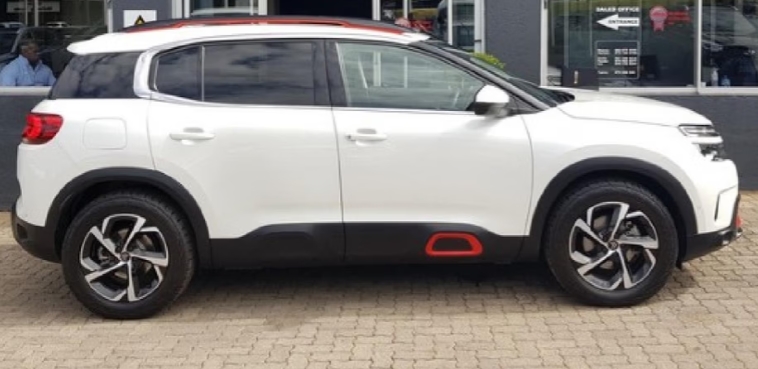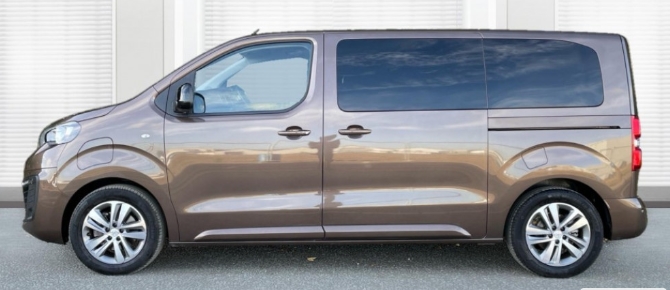The Calculated Contender: The Evolution, Rise and Fall of the Hyundai Mistra
In the vast and complex world of global automotive manufacturing, not all cars are created equal, nor are they intended for every corner of the map. Some vehicles become household names, sold from Seoul to Seattle, while others are purpose-built instruments, designed with surgical precision to conquer a single, crucial market. The Hyundai Mistra is a prime example of the latter—a sedan born from deep market research, specifically tailored for the unique tastes and demands of the Chinese consumer. Its story is not one of global conquest, but of strategic success, bold evolution, and ultimately, a quiet concession to shifting automotive tides. This is the evolution of Hyundai’s calculated contender for the world’s largest car market.
Genesis: Identifying the Gap (First Generation: 2013-2020)
The early 2010s were a period of explosive growth for the Chinese auto market. Consumers were graduating from smaller, entry-level cars and seeking more space, comfort, and prestige, but often without wanting to make the full financial leap to a large D-segment sedan like the Hyundai Sonata. Foreign automakers quickly realized a lucrative gap existed. Chinese buyers, particularly those who used their cars for family or business transport, placed an enormous premium on rear-seat legroom. A standard C-segment sedan, like the Hyundai Elantra (known as the Avante or Lantra in other markets), was often perceived as slightly too compact, while the Sonata was a step too far in both price and size.
Hyundai’s answer, developed through its joint venture, Beijing Hyundai, was the Mistra (名图 or Míng Tú in Chinese). Unveiled as a concept at the 2013 Shanghai Auto Show and launched for the 2014 model year, the Mistra was a masterclass in market-specific product planning. It was engineered to be an “A+” segment sedan, slotting perfectly between the Elantra and the Sonata. It utilized a stretched version of the Elantra’s platform, allowing Hyundai to offer near-Sonata levels of interior volume, especially in the all-important back seat, but at a more accessible price point.
Design and Powertrain (2013-2016)
The initial first-generation Mistra was a handsome, if conservative, product of Hyundai’s “Fluidic Sculpture” design language. It featured flowing lines, a prominent hexagonal grille, and large, swept-back headlights that gave it a sense of substance and maturity. It looked more expensive than an Elantra but less imposing than a Sonata, hitting the aesthetic sweet spot perfectly.
Under the hood, the Mistra focused on proven, reliable, and cost-effective powertrains suitable for Chinese driving conditions, which often involve congested city traffic. The initial engine offerings were:
1.8L Nu MPI (Multi-Point Injection) Petrol Engine: Producing around 143 horsepower and 176 Nm of torque, this was the volume-seller, offering a good balance of performance and economy.
2.0L Nu MPI Petrol Engine: A slightly more powerful option for those desiring extra grunt, delivering approximately 155 horsepower and 192 Nm of torque.
These engines were paired with either a standard 6-speed manual transmission or a popular 6-speed automatic transmission, which provided smooth and predictable shifts ideal for urban commuting.
Trim Levels:
The trim structure was designed to cater to a wide range of budgets, typically following a pattern of increasing luxury and technology:
GL (Smart): The entry-level model, offering essential features like air conditioning, power windows, and basic safety equipment.
GLS (Comfort): The mid-range trim and often the most popular. It added features like alloy wheels, a sunroof, cruise control, and a better audio system.
DLX (Premium/Luxury): The top-tier model, which included leather upholstery, automatic climate control, a larger infotainment screen with navigation, keyless entry with push-button start, and additional safety features like side airbags.
The Mistra was an immediate success, validating Hyundai’s strategy. It consistently ranked among the best-selling sedans in China, praised for its cavernous interior, comfortable ride, and strong value proposition.
The 2017 Mid-Cycle Facelift
To keep the model fresh against mounting competition, Hyundai gave the Mistra a significant facelift for the 2017 model year. The update brought its styling in line with Hyundai’s evolving design philosophy. The front end was completely revised, adopting the new “Cascading Grille” – a more aggressive and expressive signature feature for the brand. The headlights became slimmer and more modern, and the bumpers were restyled for a sharper look. The rear also received updated LED taillight graphics.
More importantly, the powertrain lineup was modernized with the introduction of a new, high-tech option:
1.6L T-GDI (Turbocharged Gasoline Direct Injection) Engine: This engine, producing a healthy 175 horsepower and 265 Nm of torque, offered significantly better performance and low-end torque than the naturally aspirated engines. It was exclusively paired with Hyundai’s efficient 7-speed Dual-Clutch Transmission (DCT), marking a clear step up in technology for the model.
The interior was also refreshed with an updated infotainment system that now supported popular smartphone integration like Apple CarPlay and Baidu CarLife, a crucial feature for the tech-savvy Chinese market. This facelift ensured the Mistra remained a formidable competitor for the remainder of its first-generation run.
A Daring New Direction (Second Generation: 2020-2023)
By the end of the 2010s, the automotive landscape in China was changing rapidly. Design had become a major differentiator, and technology was paramount. For its second act, unveiled in late 2020 for the 2021 model year, Hyundai threw conservatism out the window. The second-generation Mistra was a radical departure, fully embracing the brand’s new “Sensuous Sportiness” design identity.
The result was polarizing. The front fascia was dominated by an enormous, jewel-patterned grille that integrated a complex, split-headlight design, similar to other contemporary Hyundai models like the Santa Fe and Palisade. The rear was equally dramatic, featuring a full-width, C-shaped light bar that gave the car an unmistakable and futuristic signature. The new Mistra grew in nearly every dimension, with its length stretching to 4,780 mm and its wheelbase to 2,770 mm, further enhancing its core selling point: class-leading interior space.
The interior was a technological revolution. The dashboard was dominated by a sweeping panel that housed two 12.3-inch screens—one for the digital instrument cluster and one for the central infotainment system—creating a seamless, high-tech cockpit.
Revised Powertrains and an Electric Surprise:
The powertrain lineup was again updated to prioritize efficiency and modern technology:
1.5L Smartstream MPI Petrol Engine: This new base engine produced around 115 horsepower and was mated to a Continuously Variable Transmission (CVT), which Hyundai branded as an IVT (Intelligent Variable Transmission). This combination was squarely focused on maximizing fuel economy.
1.5L T-GDI Petrol Engine: While smaller than the previous 1.6T, this turbocharged unit (part of a different engine family) delivered a respectable 170 horsepower and was paired with the 7-speed DCT for a more engaging driving experience.
The biggest news, however, was the introduction of the Hyundai Mistra EV. This all-electric variant signaled Hyundai’s commitment to the burgeoning New Energy Vehicle (NEV) market in China. The Mistra EV featured a closed-off, aerodynamic grille, unique wheels, and blue accents. It was powered by a 56.5 kWh battery pack, offering a claimed range of 520 km (323 miles) on the optimistic NEDC cycle. Its electric motor produced 184 horsepower and 310 Nm of torque, providing silent, instantaneous acceleration.
Trim Levels (Second Generation):
The naming convention for the trim levels was updated to reflect a more modern, tech-focused hierarchy, often including:
Leading: The well-equipped base model.
Elite: The mainstream choice with more convenience and tech features.
Premium: A high-spec version with advanced driver-assistance systems (ADAS).
Luxury: The fully-loaded flagship model.
The End of an Era: Discontinuation in 2023
Despite its bold redesign and the forward-thinking addition of an EV model, the second-generation Mistra faced a far more challenging market than its predecessor. Several factors contributed to its decline.
First, the relentless rise of SUVs and crossovers continued to erode the market share of traditional sedans across all segments. Chinese families, like those elsewhere, were increasingly drawn to the higher driving position and perceived practicality of SUVs.
Second, the competition had become fiercer, not just from rival brands, but from within Hyundai’s own showroom. The seventh-generation Hyundai Elantra, launched around the same time, had grown significantly in size, style, and sophistication, blurring the lines and cannibalizing sales from the Mistra. It was now large enough for many buyers, making the Mistra’s “in-between” proposition less unique.
Sales of the second-generation Mistra never reached the heights of the original. Faced with declining demand and a strategic shift towards SUVs and a more streamlined global lineup, Beijing Hyundai quietly ceased production of the Mistra in 2023.
.
RepairSurge Online Repair Manuals Replace Bulky Books With Reliable Digital Information!
Faster And Cheaper Than Traditional Printed Manuals, Users Get Instant Access To The Repair Information They Need For Any Car, Truck, Van or SUV:
.
Legacy of a Niche Conqueror
The Hyundai Mistra may have faded from production, but its legacy is significant. It stands as a powerful case study in the art of listening to a market. It was a car that didn’t try to be everything to everyone, but instead was meticulously crafted to be the perfect thing for a very specific, and very large, group of consumers. The first generation’s runaway success was a testament to Hyundai’s astute understanding of the Chinese preference for rear-seat space and value. The second generation’s bold design and electrification showed a willingness to adapt and innovate, even if the market had already begun to move on.
While its name may never be as recognized as Elantra or Sonata, the Mistra played a crucial role in cementing Hyundai’s position as a major player in China for nearly a decade. It was a car born of data, designed for a purpose, and for a time, it executed its mission flawlessly.







